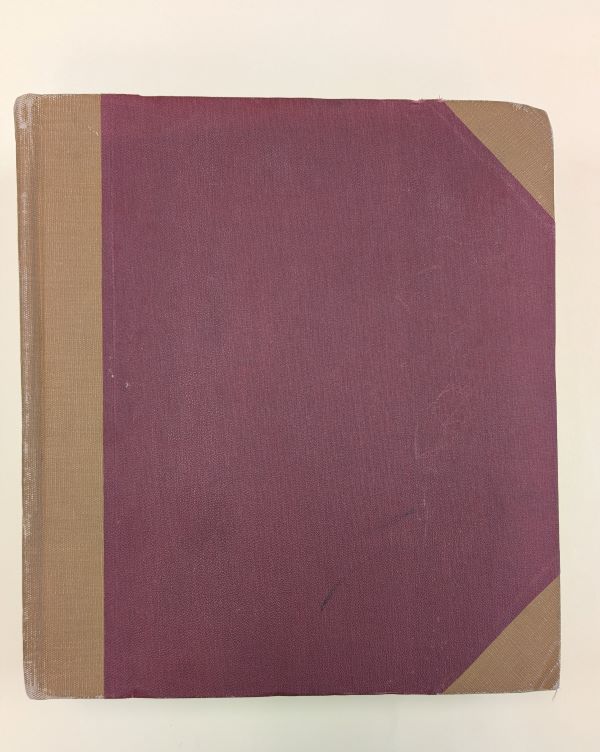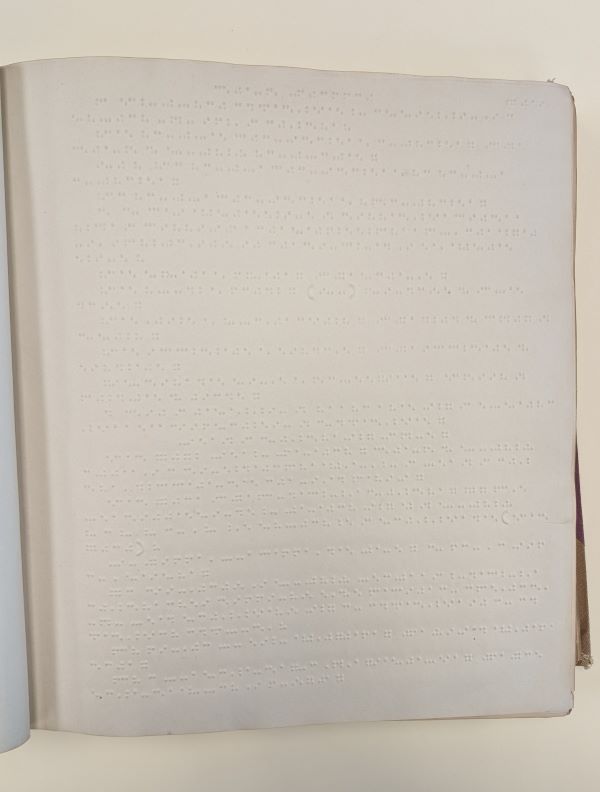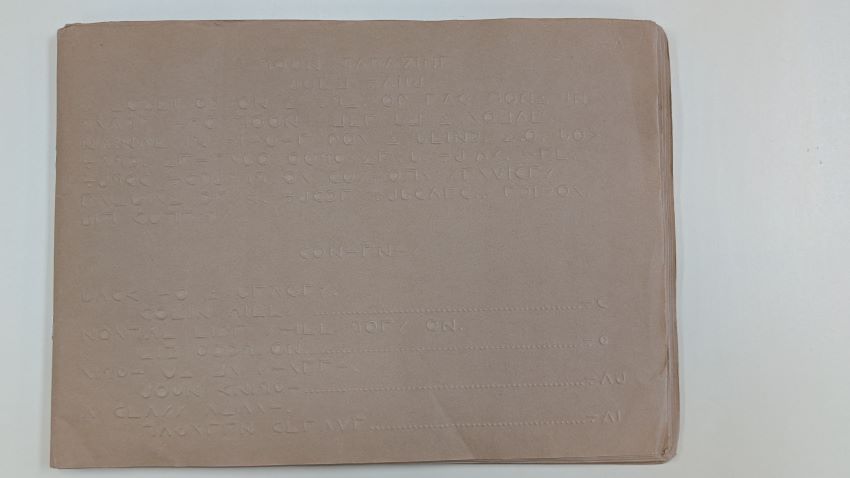A variety of tactile writing systems were created and used in the 19th century, including Moon type, raised print, and New York point.
Raised Print in Kneass’ Philadelphia Magazine for the Blind (1889)
The cover of a book shows raised letters reading “Kneass’ Philadelphia Magazine for the Blind” in large text at the top. Underneath, the text reads:
[Established 1867]
ENTERED AT THE PHILADELPHIA POST OFFICE AS
SECOND-CLASS MATTER
Published Semi-Monthly, by N.B. Kneass Jr.
No. 219 Church St., PHILADELPHIA, PA.
Terms: --$3.50 per annum in advance post free
Sample Numbers 30 cents
VOL. XXIII, No. 17
September 1, 1889
CONTENTS
The Reverend J. Crossett page 97
Meeting & Parting. Poetical. IDA GLENWOOD page 101
The Discourager of Hesitancy
A Continuation of the “Lady, or the Tiger?” STOCKTON page 102
Private Fortunes in Ancient Times page 103

In the late 1700s, education for blind people began to incorporate literacy skills, in addition to vocational skills. In 1786, the first tactile text was created in Paris, France by Valentin Haüy with a technique that used embossed plates and wet paper.
In the debate for writing types, some favored raised print for readability by both blind and sighted people, while others criticized it for being hard to read with just a single finger. This copy of Kneass' Philadelphia Magazine for the Blind from September 1889 shows that the system was popular enough to have survived over one hundred years after its creation.
New York Point in A French Grammar, Volume III (circa 1900)


In the 1860s, William B. Wait, a teacher at the New York Institution for the Blind, noticed that blind children and adults were struggling to read raised print. By 1871, he had created New York point, and it was being recommended for use in schools for the blind in the United States.
Much like today’s Braille, Wait’s system used an alphabet of raised dots, but arranged in a cell two dots tall, rather than three, as shown in this circa 1900 book A French Grammar, Volume III. Subsequent division over the superiority of New York print versus Braille lead to what became known as “The War of the Dots.” Ultimately, Braille emerged victorious.
Moon Type in Moon Magazine (1990)
This is an example of Moon Magazine from July 1990. A page is covered with Moon Print embossing. After a paragraph of text at the top, there is a table of contents at the bottom with titles on the left and page numbers on the right.

Moon type is an embossed reading system that was created by William Moon in 1845 in Brighton, England. Much like Braille, Moon uses an alphabet that corresponds to print letters, except it uses raised lines and curves, rather than dots. Moon Type continued through the 20th and 21st centuries; however, it is harder to produce and far less popular.
Archive Navigation
Next Exhibit: Braille: A Global Movement for Literacy